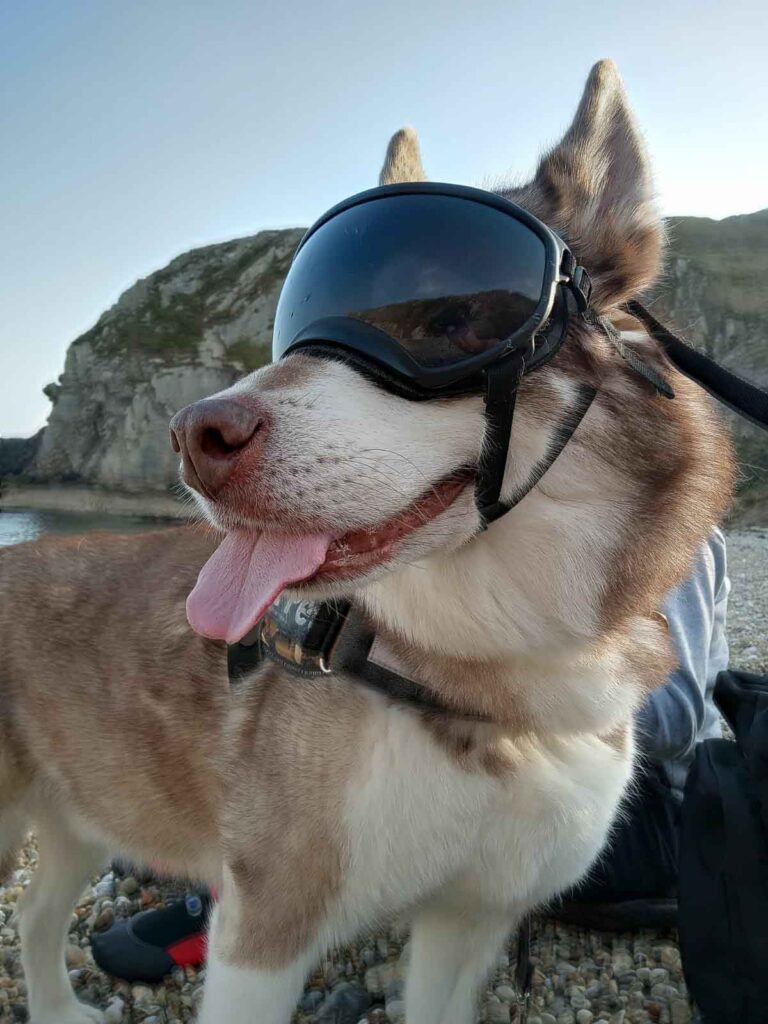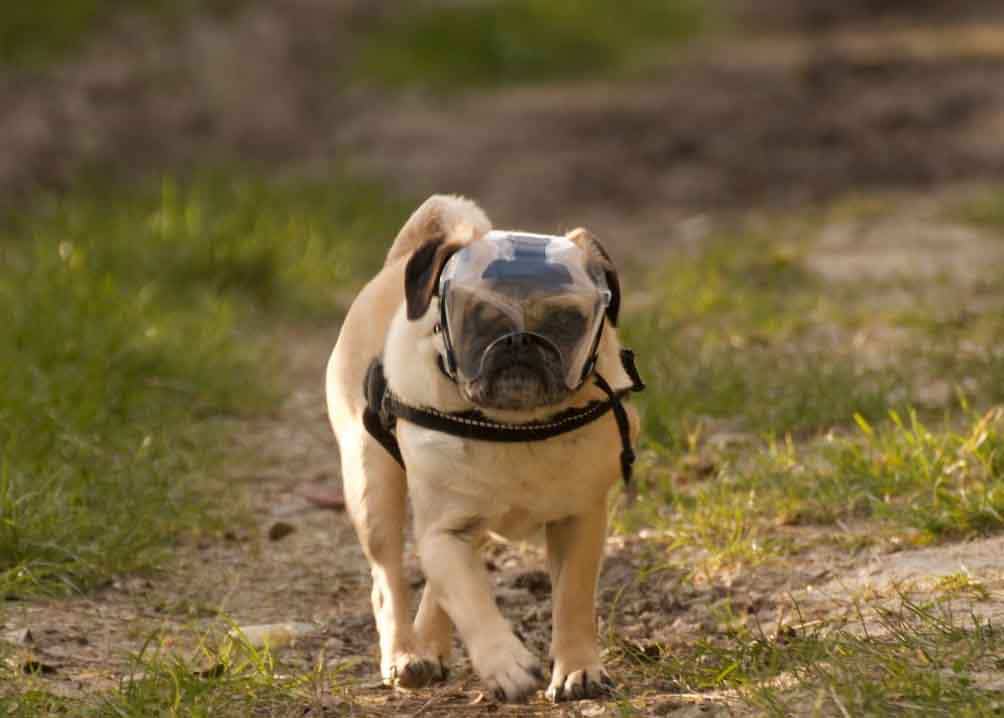Categories
A bright future ahead for dogs with sunglasses
Our Ophthalmology team has been advising that dogs who need protection from bright light are fitted with specially designed pet sunglasses.
The team has recently helped three troubled dogs beat the blinding glare by recommending visors and sunglasses which have been specifically designed for animals.

Ida Gilbert, head of ophthalmology at Eastcott, says tinted glasses are a quick and practical solution for several painful and worrying conditions and, although they come in many distinctive designs, should not be viewed as fashion accessories.
Ida said: “Sunglasses for dogs may seem peculiar but it is a viable solution to help pets in situations where their eyes need protection or may need that extra bit of support because of surgery or a previous trauma.
“There are certain conditions in dogs which worsen from exposure to UV light such as pannus, an immune-mediated condition affecting the cornea or clear part of a dog’s eye.
“Dogs with such conditions may be able to reduce the need for topical medications if sunglasses or a visor is worn. However, it is important they have a thorough examination and a proper diagnosis before trying them out.
“Some animals with reduced vision can benefit from improved confidence as they can sense their surroundings better through the visor, whilst others may find it easier to eat and drink than when they wear a more traditional buster collar after surgery.
“Used alongside surgical treatments for eye conditions, the addition of glasses and visors is part of the patient’s wider care plan. It may not be an option for everyone, as the dog will need some training, but it is an alternative and appropriate solution for many and a good aid to recovery.”
The shades have certainly gone down well with pet owners who all claim they have been beneficial and helped their dogs whilst recovering from eye surgery, for instance, rather than wearing a larger buster collar.
Miluse Vojtiskova, from Swindon, has a 14-year-old miniature poodle who suffers from iris atrophy and is unable to constrict her pupils in bright light.
Miss Vojtiskova said: “My dog Celine suddenly began behaving abnormally while we were out on walks.
“She was extremely nervous, sometimes she would freeze in her tracks and other times she was very jumpy, alarmed, and distressed.
Celine was diagnosed with iris atrophy. This is when the pupil in the eye fails to constrict in bright light and causes the dog to be almost blinded by the glare and experience photophobia or ocular pain as a result.

“When Ida suggested sunglasses, I was dubious but then she showed me some photographs and convinced me.
“I introduced them to Celine gradually, at the beginning just fitting her with the frames and getting her used to that, encouraged with a treat or two. Then I tightened the straps a bit more and finally I added the lenses and took her for a walk.
“Naturally, her first instinct was to try to get them off but after a few more treats and a lot of perseverance she is fine with them and they are working so well.
“This simple solution meant we didn’t have to alter our everyday routine and only take her for walks at night or when the sun was at its lowest.”
Polarised sunglasses are coated with a chemical filter that cuts glare. They work by blocking light waves bouncing off horizontal surfaces.
James Haseler is a resident in veterinary dentistry and maxillofacial surgery at Eastcott Referrals, and he opted for a clear Optivizor for his six-year-old pug, Morka.
He said: “Morka initially had cataract surgery six months ago but, unfortunately, developed an unrelated, complicated melting ulcer in her right eye, which caused a cascade of problems.

“In the end the eye was non-visual, and we had it removed but then she developed a melting ulcer on her left eye. To protect that eye and assist the healing, we bought an Optivizor for her to wear and it has worked really well.
“It fits nicely and it does not restrict her vision. It also protects her from our boisterous yellow Labrador who always wants her to play.”
Amy Wilson, from Shaftesbury in Dorset, says Duke, her six-year-old Siberian Husky/Malamute crossbreed, has suffered with cataracts and other eye conditions since he was just 18 months old and has already had his right eye removed.
She said: “It’s vitally important to protect Duke’s left eye, so when Ida recommended RexSpecs I thought ‘Whatever you say, you are the expert!’
“At first, though, Duke did not want to wear them and tried everything to get them off, including rubbing against my leg, the sofa, the floor and shaking his head.
“Now he is much more accepting and has two pairs – a tinted pair for sunny days and when he goes to the beach and a clear pair to protect his eye on more shady days.
“I’ve had plenty of comments from passers-by like ‘Why’s your dog wearing sunglasses?’ and “Oh your dog’s wearing ski goggles.” I would recommend them to other dog owners whose pets have serious eye problems.”
